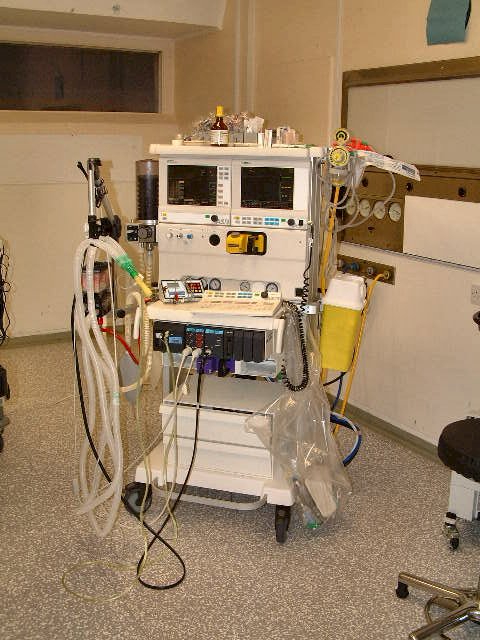Anaesthetic machine
|
|
Anaesthetists use anaesthetic machines to support the administration of anaesthesia.
The machine includes the following components:
- connections to piped hospital oxygen, air, and nitrous oxide
- back-up gas cylinders of oxygen, air, and nitrous oxide
- flow meters for oxygen, air, and nitrous oxide
- one or more anaesthetic vaporisers to accurately add volatile anaesthetics to the fresh gas flow
- a ventilator
- physiological monitors to monitor patients' heart rate, ECG, blood pressure and oxygen saturation (additional monitors are generally available to monitor temperature, Arterial blood pressure central venous pressure,etc)
Based on experience gained from analysis of mishaps, the modern anaesthetic machine includes several safety devices, including:
- hypoxic mixture alarms
- ventilator disconnect alarms
- interlocks between the vaporisers preventing inadvertent administration of more than one volatile agent concurrently
- alarms on all the above physiological monitors.
There is generally a small work bench built into the machine where airway management equipment is kept within ready reach of the anaesthetist.
Links
- Virtual Anesthesia Machine (VAM), a free transparent reality simulation of a generic anesthesia machine from University of Florida (http://vam.anest.ufl.edu)
- A free workbook with structured exercises for use with the VAM simulation (http://vam.anest.ufl.edu)
- Virtual Anaesthesia Textbook (http://www.virtual-anaesthesia-textbook.com/vat/machine.htm)
